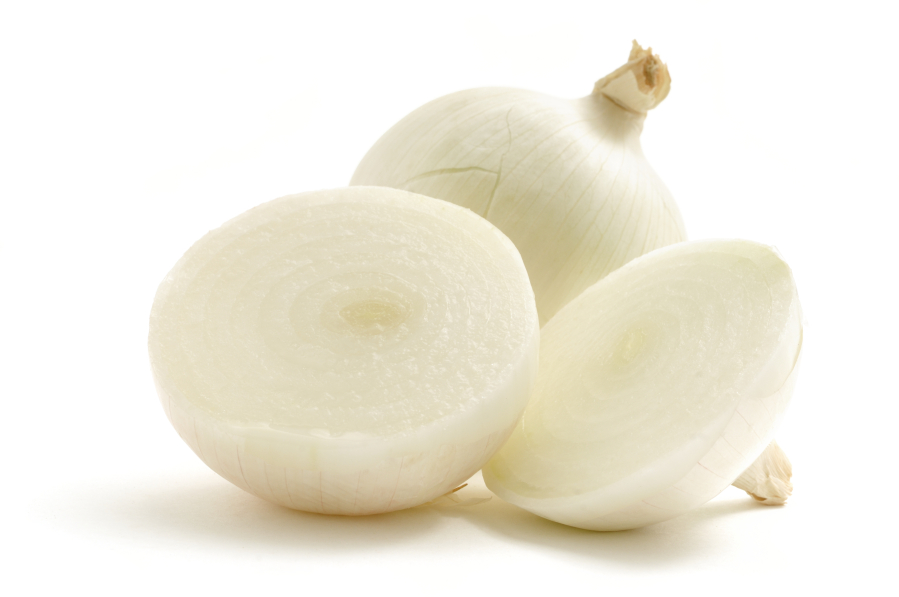Onions are one of the most versatile vegetables, providing a piquant or sweet tang, whether eaten raw or added to recipes. A market staple year-round, onions can enhance almost any dish. The high sugar content allows for a sweet surprise when saut?ed.
The most popular cooking variety used today is the yellow onion, with a spicy boldness that mellows and sweetens with cooking. The white onion can vary from mild to spicy, with little aftertaste. Spanish red onions are generally milder than white or yellow with a crisp quality that adds crunch to salads and sandwiches. Walla Walla and Vidalia onions are sweet onions that have a higher sugar content, making them the mildest variety.
The mature onion is the most popular. Young plants known as green onions may be harvested before the bulbs form. When allowed to mature until a small bulb forms, they are called scallions.
Onions are a good source of vitamins B1, B6, C and K, as well as dietary fiber and folic acid. One cup provides 46 calories.
When purchasing fresh onions, look for those bright in color, with a shiny thin skin, no odor and firm necks. Storage onions are darker in color and have a thicker skin. When cut into, onions should have a creamy white interior. Avoid onions that are soft or sprouting; young onions are sweeter than old ones.
Mature onions should be stored in a cool, dry, ventilated place, not in the refrigerator, and not in plastic bags, which reduces their storage life. After onions have been peeled, chopped or sliced, keep in a sealed container in your refrigerator for up to seven days. Spring or green onions and shallots should be wrapped and refrigerated for up to 5 days.
Freshly cut onions often cause a stinging sensation in the eyes because sulfuric compounds are released, stimulating nerves in the eye. Irritation can be reduced by cutting the onions under running water, refrigerating them before cutting, or leaving the root end intact while slicing.
Chopped or sliced onions can be frozen for later use in cooking; lay them on a baking sheet in the freezer until hard, then store in a freezer container or freezer bag. The thawed texture will be soft; frozen onions are best used in cooked dishes.
Dehydrated onions are handy to have in the pantry, and require less storage space. Instructions for safely drying onions and other vegetables can be found at http://nchfp.uga.edu/how/dry/csu_dry_vegetables.pdf.
One delicious way of preserving onions is to make onion jam or marmalade, which elevates a burger or sandwich to gourmet status. Find one recipe for Onion Marmalade at http://ext100.wsu.edu/clark/?p=8163.
For additional onion recipes and serving suggestions, check out Chef Scotty’s Market Fresh Recipes at http://ext100.wsu.edu/clark/?p=8163.
Judi Seifert is a WSU Clark County Extension Master Food Preserver. For additional recipes, food preservation and food safety information visit http://ext100.wsu.edu/clark/?p=1134. Questions? Call MFP Helpline: 360-397-6060 ext. 5366, or join Facebook Discussion Group “WSU Home Food Preservers – Clark County.”



